WORKSITE (LAOS)

Tea cultivation is really characteristic, especially for north region. The oldest tea plantation with even 400 years trees is placed here. Mostly women deal with tea agriculture. They hoard proper leaves, choose the best and dry them. On their backyards they put such tables and do their daily routines. This photo depicts a typical “worksite” of many Laotian women from north part of the country. Classic, short chair with a huge table is a “must-have” set.
HALF-TABLE HALF-PAWN

We called it half-table half-pawn because they look like chess „towers”. This chair design we saw for the first time in Laos and their style will always bring Laos to our mind. Those furniture are made from teak wood which is very popular in Asia. It is said that in Laos this wood is the most expensive. We have seen this kind of furniture here many times because they stand in front of houses or in the entrances (as in this case). That is a great place to eat together, drink together or play board games.
BUDDHIST THRONE (MJANMA)
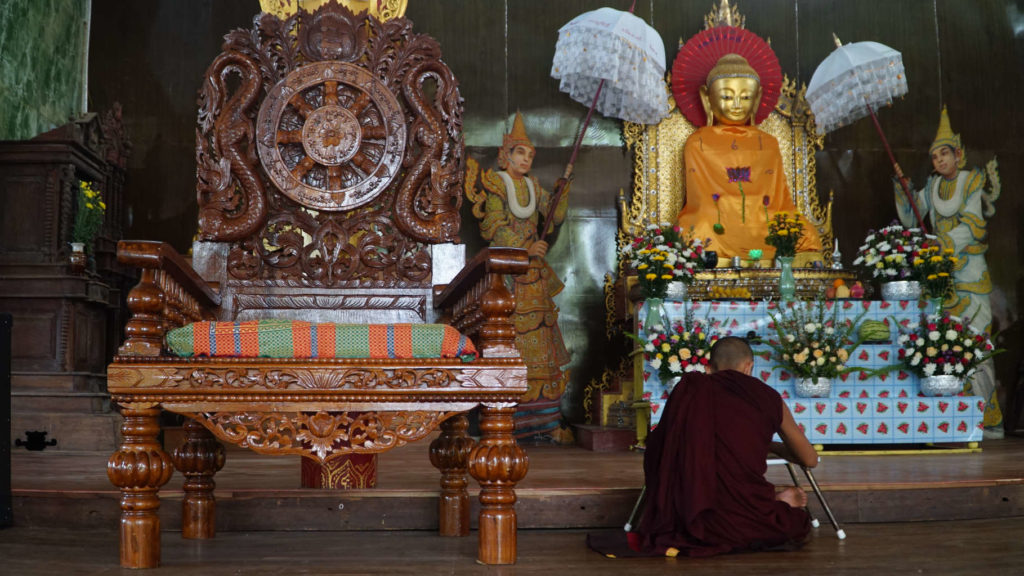
Here it is! – ornamented teak throne in one of Burmese Buddhist temples. We saw it a few times during our stay in this country but it often looked a bit different. It is always huge and it stands by the altar, in the middle. Teacher-monk sits on in on special occasions. On its head-rest you can see Buddhist symbol Dharma Circle (which symbolizes the whole knowledge that Buddha left). It has a shape of ship’s steer. Also lotus flowers were sculpted on it. They symbolize beauty, virginity and harmony. The throne on the photo in placed in the monastery which during the school year has a function of school. That is why you can see a young boy on the photo. He is studying Pali – language of Buddha.
PALM CHAIR (MJANMA)
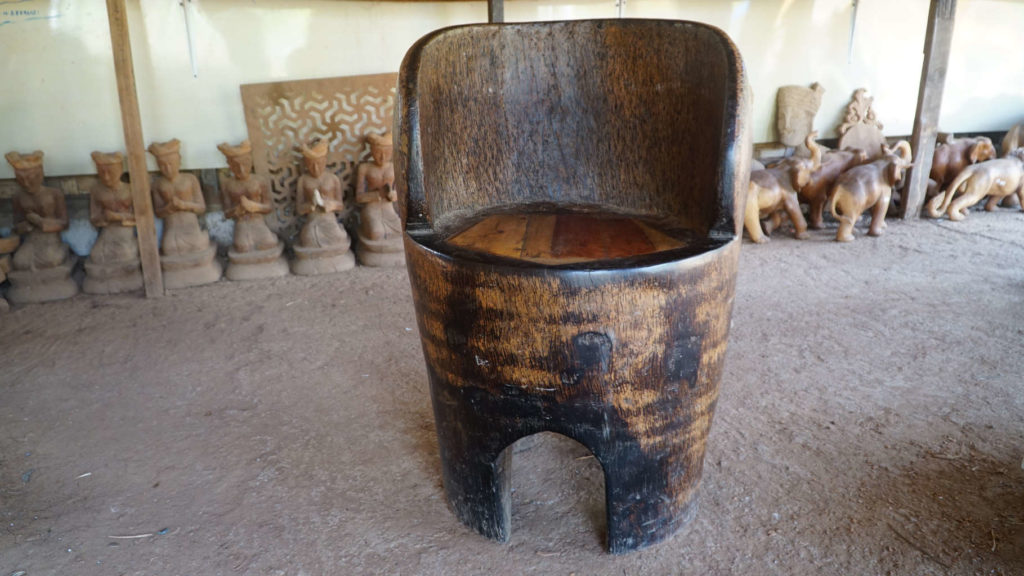
Next to Inle in Birma we visited a workshop of some sculptor. We were impressed watching him finishing unique chairs from exotic wine palm trees’ wood. He spent 2 weeks on preparing 6 chair set. The most interesting is fact that elements that seem to be identical are a bit different in shape and color because they were not done by a programmed machine or they were not done with some template. That way they become unique and more valuable. We were really impressed by those chairs.
PEACOCK ARMCHAIRS (MJANMA)

On the photo you can see Asian design connected with traditional Burmese regionalism. We really liked that styles mix. Those impressive armchairs are inspired by peacocks that are acclaimed to be special in Buddhist countries cause Buddha is supposed to be their king! Between them you can see Burmese homemade box ornamented in characteristic way by local artists. This brave combination you can find in Rangoon – 7 mln ex Burma’s capital city.
CHARPAI – TRADITIONAL BED (INDIE)
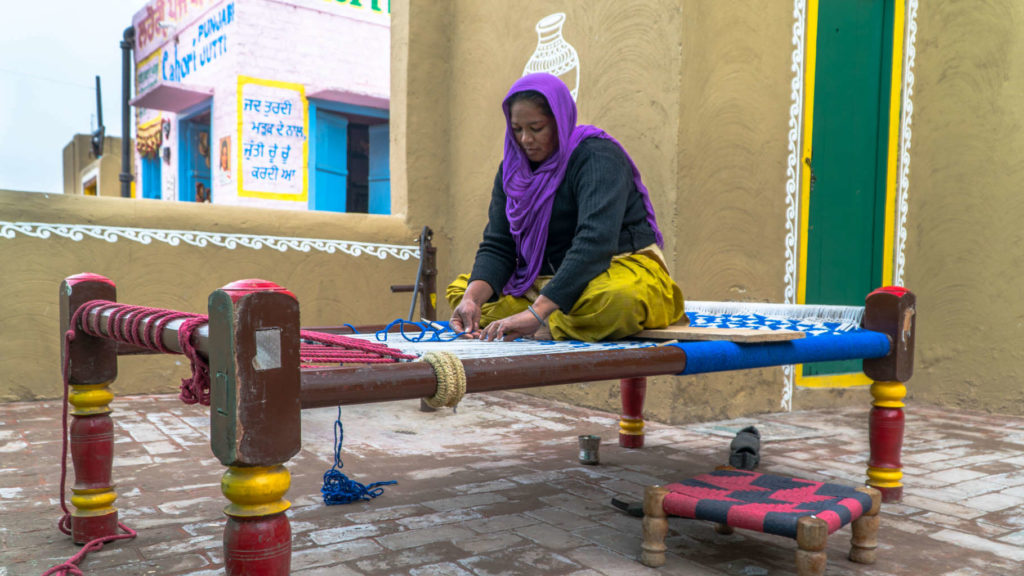
We were walking in some village in Punjab state where we saw Charpai being weaved. Charpai is a short, simple bed which instead of mattress has pleat. It is made from 4 wooden or metal short legs and plastic line or coconut fiber which is wrapped around the frame maintaining legs. Sometimes a pleat has one color, sometimes it creates beautiful colorful pattern. It is an important element of interior furnishing in every house. Mostly outside the city. This original bad often stands in front of houses. During hot weather to get cooler a bit people sleep outside. During the day you can seat your guests there. Sometimes people put duvet or thin mattress on it to feel more comfortable.
Indian Rajasthan state is famous from different kinds of furniture. We especially liked colorful, patchwork design. Every object has its own story from the past because furniture is made from wood that has already been used before – kind of recycling that saves some wood J that also makes furniture unique and more valuable! Furniture is handmade. Some old wood needs to be find (old door, wardrobe, table ect.) then new shape is created form old elements and everything is painted. Mango, acacia and teak wood is really popular here. That is how typical Rajasthan’s patchwork furniture factory looks like.
Jodhpur in Indian Rajasthan is a birthplace of traditional furniture ornamenting which has unique and old charm. Richly ornamented elements, symmetric lines, flower and animal themes remind about Mongolian culture influence on this region’s population. Handmade and precisely ornamented furniture is a reflection of the past and rich Indian culture. Most popular is mango and sesame wood. Those unbelievable masterpieces are often made in home workshops which are rarely equipped with professional equipment. Unfortunately, we did not manage to get to the place where furniture was varnished to show you finished masterpiece. But the author showed us a lot of pictures that impressed us even more.
CHEST OF DRAWERS WITH SOUL (INDIA)
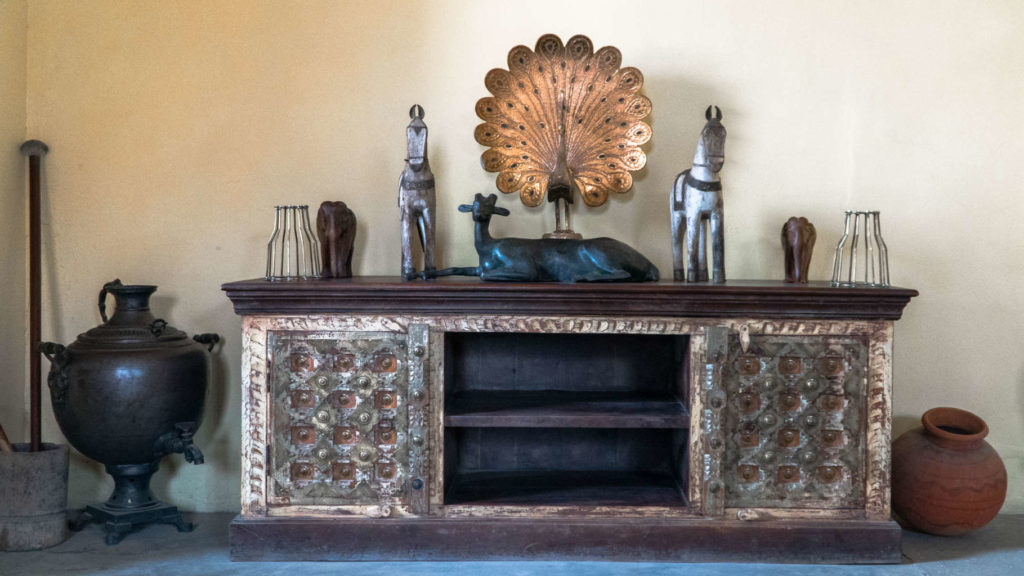
In one apartment where we stayed during our couchsurfing adventure in India, we found such a chest of drawers. It stood on a seat of honour in a living room surrounded with heirlooms. It was supposed to be made from teak and mango wood, hand painted and ornamented with metal elements. This style and design is characteristic for Punjab furniture school. We think that it would fit to Polish houses 😉 .
MUDA – BAMBOO STOOL (NEPAL)
 It actually was a love from the first sight! The one in the picture was standing in front of a little shop nearby the bus stop where we waited for transport after our 9 day long trekking. As we found out later those little stools are very popular in households in Nepal. They are made with bamboo and colored plastic which is a product of recycling, which makes each of them different. It takes one day to do such a stool, provided one has all the materials 🙂 You can’t find any factory producing this furniture. They are made by street artisans. An interesting fact about them is that in the beginning they were only made by prisoners.
It actually was a love from the first sight! The one in the picture was standing in front of a little shop nearby the bus stop where we waited for transport after our 9 day long trekking. As we found out later those little stools are very popular in households in Nepal. They are made with bamboo and colored plastic which is a product of recycling, which makes each of them different. It takes one day to do such a stool, provided one has all the materials 🙂 You can’t find any factory producing this furniture. They are made by street artisans. An interesting fact about them is that in the beginning they were only made by prisoners.
MULTI FUNCTIONAL WOODEN STOOL (NEPAL)
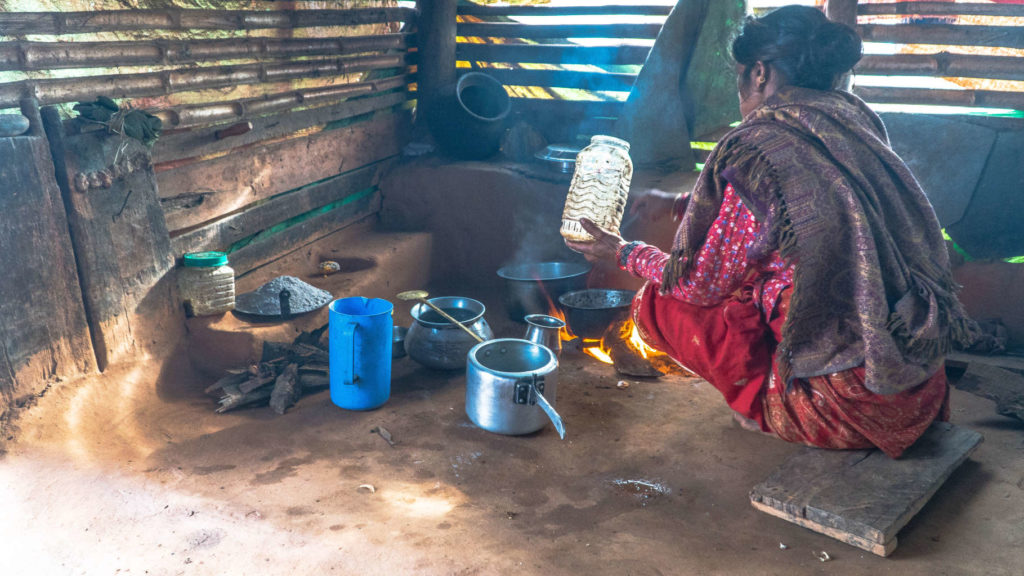
A stool-like piece of furniture we discovered during the voluntary week. It’s difficult to specify the function of this object. One can sit on it, squat, stand or place dishes. So basically it may be used for everything and it’s simply a combination of a couple of boards put together. It’s one of the most basic and popular piece of furniture, especially in the poor houses.
WOODEN CRADLE (NEPAL)
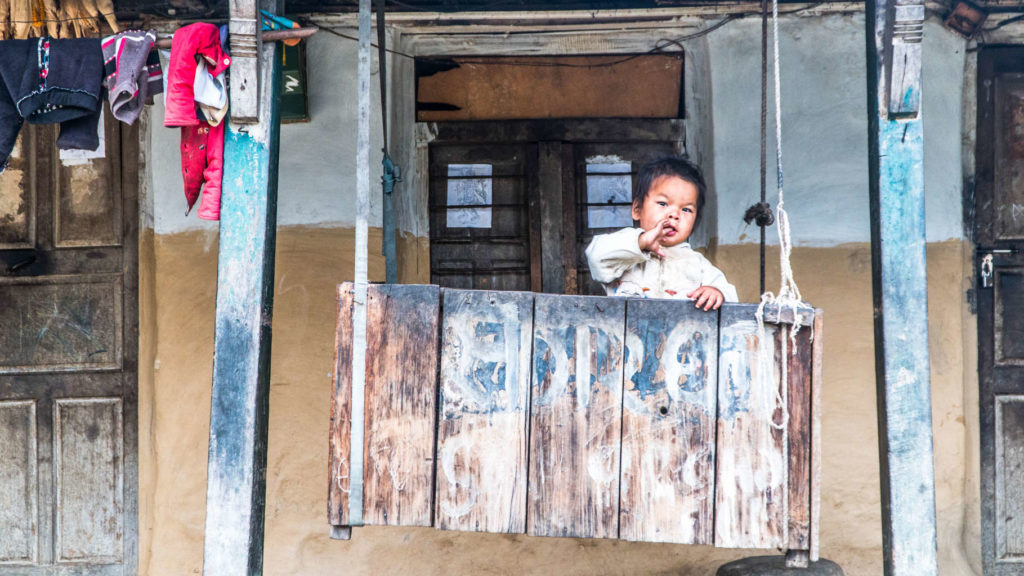
During the trekking in Himalaya we visited a little village with only few houses. We met a family who lived there for a very long time. We found there this simple solution for a swing-cradle. So we took a picture of it so that you can see it too. 🙂
The most common material to do furniture with in Nepal is bamboo. It is a solid material easy to work with and light as well as good looking and cheap. We associate it with sun, relax and good energy! If we had a house we would definitely buy some bamboo furniture, some chairs or tables or maybe a coat-stand. Let’s have a look inside of a little furniture shop where those bamboo objects are made.
SONNATI / QAHVEKHUNEYI – IRANIAN SEAT

While walking on narrow streets in small Iranian village Abyaneh known from multilevel buildings, we found this pearl in autumn scenery. It was placed in a random restaurant. People in Iran eat on this table-bank, seat, smoke shisha, drink tea or coffee. The whole seat is made from walnut or oak wood and it looks like wider, deeper bank with armrests. The thing that makes it being both table (floor) is of course carpet on which you always step barefoot. Carpet is almost sacred! J Iranians eat homemade food almost always sitting on a carpet and after a meal they rest their backs leaning their backs on pillows adhered to walls in their houses. Restaurateurs apparently wanted to create nice atmosphere and they offer such a solution, alternative to tables and chairs mostly used only by tourists. 🙂
IRANIAN HOUSE INTERIOR

We accidentally met Iranian couple that invited us to their cute summer house in small Iranian village Chimeh. That is the view that we found in this modest, mountain cabin nest to touristic Abyaneh J Symmetrical, beautiful, clean and bright room and its furniture made from breech wood. Modern, based on traditional, Iranian embellishment motives totally impressed us. They are so different from our traditional and they are totally original! On seats there were pillows for our comfort.
THE OLD BOAT BENCH (IRAN)
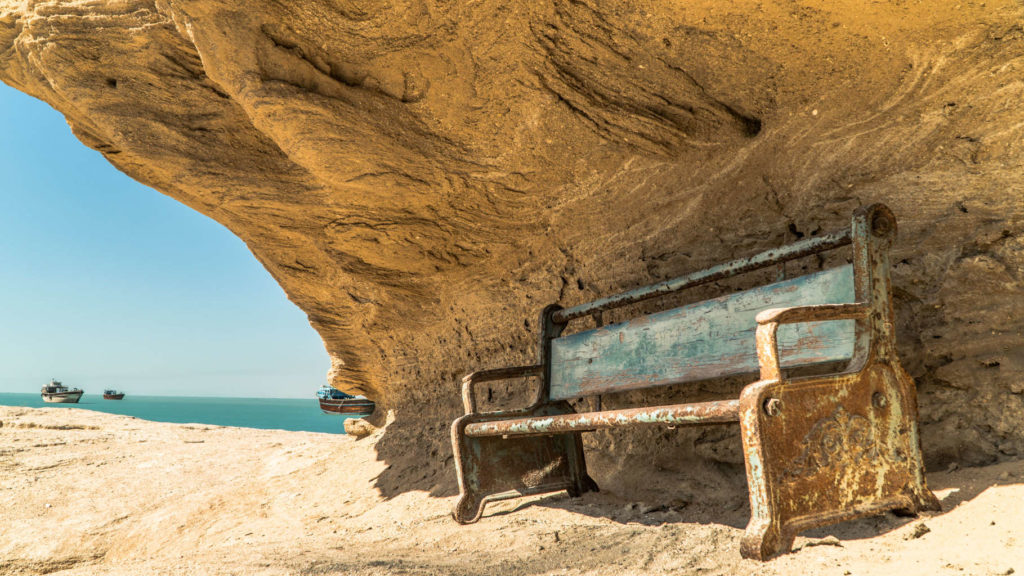
When we were on Iranian Qeshm Island in Persian Gulf we visited Laft village which is famous for the fact that its habitants build and repair wooden ships in a traditional way. From one of those ships they took out this bank and it was situated by the shore under a rock to make a work break more pleasant J We were impressed by this localization and we decided to share with you this idea of using random, old ship bank.
GEORGIAN THRONE
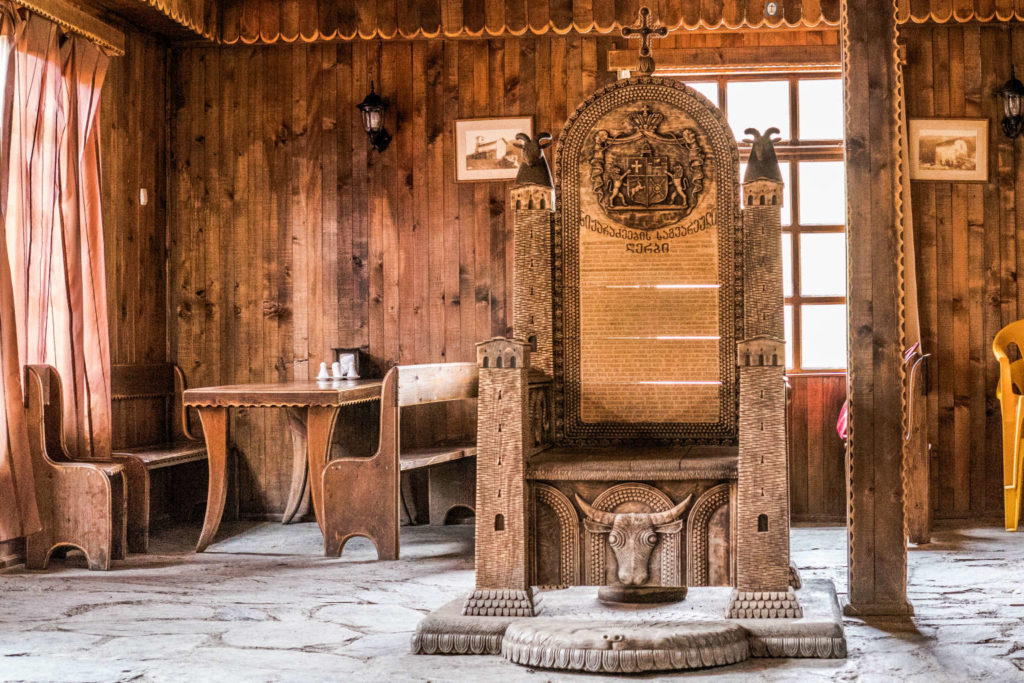
In Georgia we accidentally found Beso Nizharadze’s house. He is a very talented and very hospitable sculptor who loves wood. Furniture is his specialty but he also creates different kinds of ornamentation, accessories or wooden souvenirs from mountain Svaneti. His handmade, traditional seats look like royal thrones and their symbolism is connected with Georgian history and culture.
We found out that such thrones were made in the past for the president who was giving it to many sovereigns all over the world also to the former Polish president – Lech Kaczynski. Producing every throne takes 6 months of difficult and precise work. We had a chance to see one in his house in his mountain hometown Ushguli (known as the highest placed settlement in Europe!!! The highest point is brother Beso restaurant – Café Koshki 🙂
The chair on the photo was made from 2 pieces of oak wood. It was made for son’s 6th birthday and then he gave it to his ancestors. It has a lot of details – for example crest and Nizharadze family’s history and also back rest in the shape of fortified towers that are popular in Svaneti. Years ago Georgians running away from the enemies built them to protect their families and their property.

